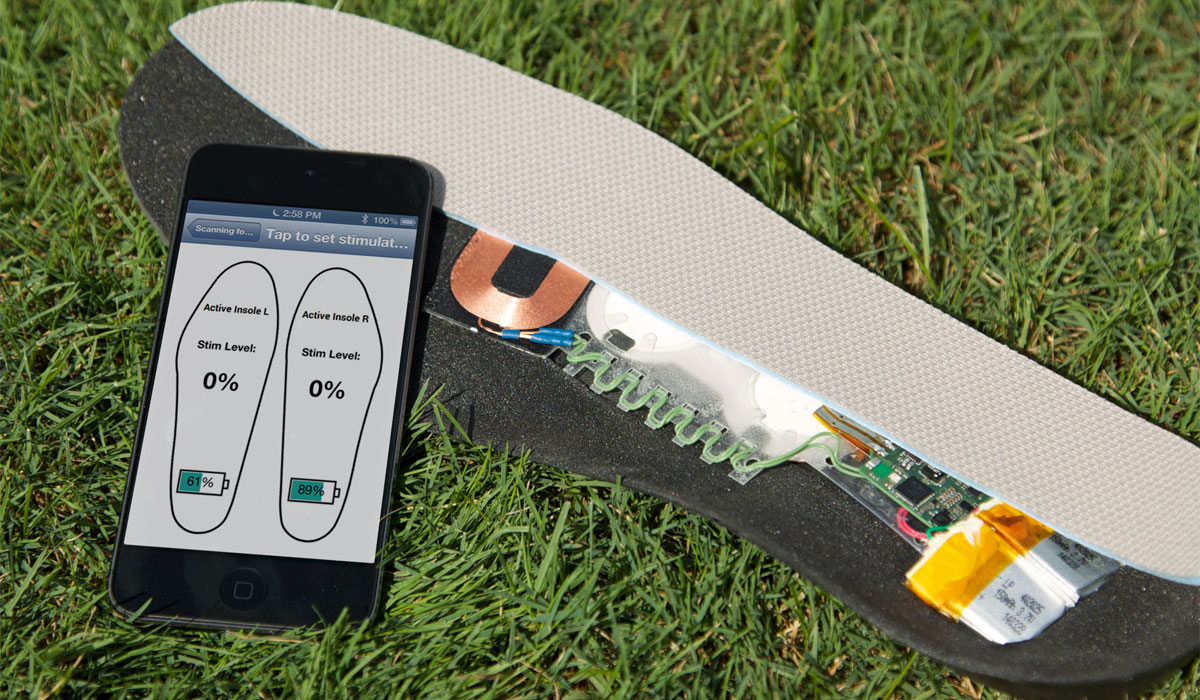Vibrating Insoles May Help Reduce the Chances of Falling

Vibrating insoles photo provided to bostonmagazine.com by Harvard’s Wyss Institute.
Falling is scary, and for adults over the age of 65, a fall can do a lot more than cause a bruise. According to the CDC, one in three seniors that fall each year suffer moderate to severe injuries such as hip fractures and head traumas, and only 25 percent of those patients fully recover.
When looking into finding solutions to problems with balance and gait, scientists at the Institute of Aging Research (IFAR) at Hebrew SeniorLife, Beth Israel Deaconess Medical Center, Wyss Institute for Biology Inspired Engineering, and Harvard Medical School found that when they installed vibrating insoles, called piezoelectric actuators, into the bottom of an individual’s shoe, the chances of that person falling and getting hurt decreased by 70 percent. The study was published in the Archives of Physical Medicine and Rehabilitation.
“Although loss of sensation in the feet is a common problem among elderly people that can impair balance and gait and result in falls, there are currently no interventions available that can reverse sensory impairments and prevent these dangerous consequences,” says the study lead author Lewis Lipsitz, MD, director of the Institute for Aging Research, in a statement.”We were very excited to discover that small amounts of vibratory noise applied to the soles of the feet may be able to do just that.”
Reps from Harvard say that the vibrating stimulation is “delivered by a urethane foam insole with embedded piezoelectric actuators, which generates the mechanical stimulation.” This research piggy backs off of a previous study that looked at all ages. The previous study found when they added vibrations to the bottom of a persons foot, their balance improved.
This new research took those findings and redesigned vibrating insoles for a senior-specific demographic. The redesigned insoles are more portable and energy efficient so that they can be inserted comfortably in any shoe.
According to the study:
The vibrating insole study enrolled 12 elderly volunteers in good health, between the ages of 65 and 90 years old. Two piezoelectric actuators to deliver the vibratory stimulation were placed in the medial arch region of commonly–available insoles. Then, participants underwent a battery of tests that measured their balance and assessed their gait. They were also given a timed “Get Up and Go” test, which measured how long it took participants to stand up from sitting, walk three meters, turn around, walk back, and sit down again.

